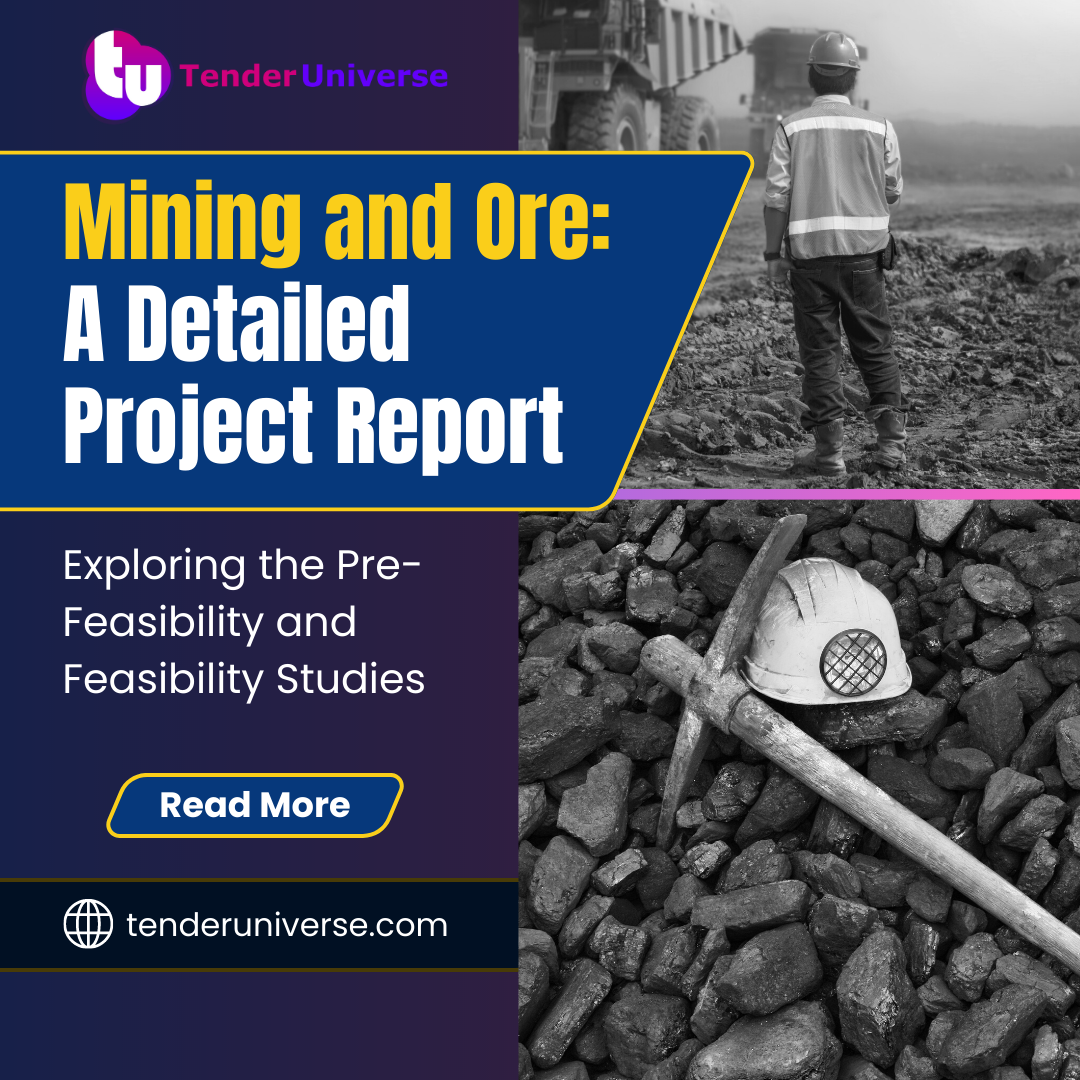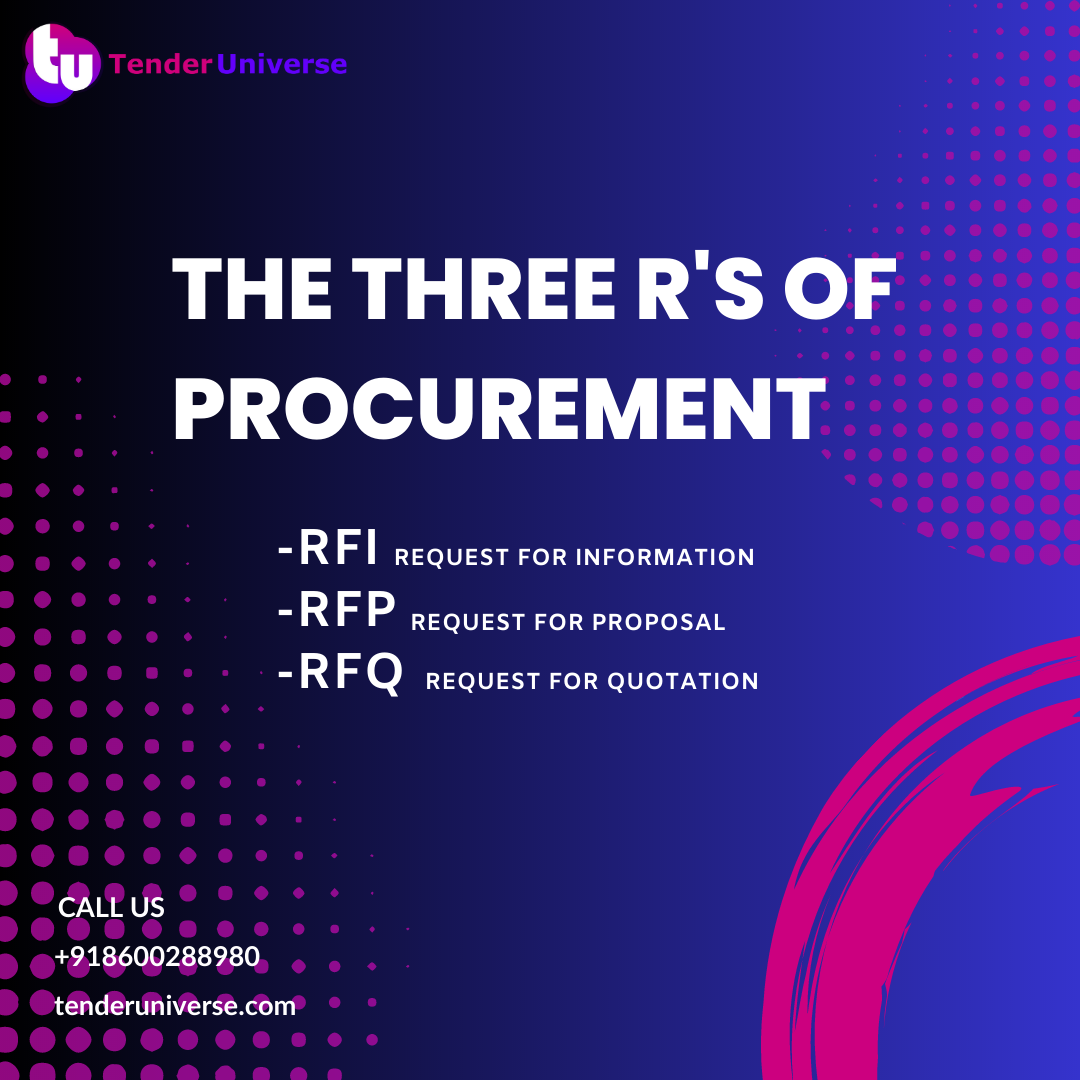
Mining and Ore: A Detailed Project Report
The mining industry in India is a major economic activity which contributes significantly to the economy of India. The gross domestic product (GDP) contribution of the mining industry varies from 2.2% to 2.5% only but going by the GDP of the total industrial sector, it contributes around 10% to 11%. Even mining done on a small scale contributes 6% to the entire cost of mineral production. The Indian mining industry provides job opportunities to around 700,000 individuals. As of 2012, India is the largest producer of sheet mica, 2015 the fourth largest producer of iron ore, alumina, chromite, and bauxite in the world.
India's metal and mining industry was estimated to be $106.4 billion in 2010. In 2019, the country was the 4th largest world producer of iron ore; 4th largest worldwide producer of chromium; 5th largest world producer of bauxite; 5th largest world producer of zinc; 7th largest producer of manganese in the world; 7th largest producer of lead in the world; 7th largest producer of sulfur in the world; 11th largest world producer of titanium; 18th largest world producer of phosphate; 16th largest world producer of gypsum; 5th largest world producer of graphite; 3rd largest world producer of salt.
The mining industry in India is regulated by the Ministry of Mines, Government of India. The ministry is responsible for formulating policies and regulations for the mining industry, promoting sustainable mining practices, and ensuring the safety of miners. The ministry also provides financial assistance to the mining industry for exploration and development of new mines.
The mining industry in India has the potential to contribute significantly to the country's economic growth. The government of India is committed to developing the mining industry and making it a major contributor to the country's economy.
Here are some of the key trends in the mining and ore industries in India:
Increasing demand for minerals: The demand for minerals is increasing due to the growth of the construction, manufacturing, and energy sectors.
Rising prices of minerals: The prices of minerals are rising due to the increasing demand and limited supply.
Government focus on sustainable mining: The government of India is focusing on sustainable mining practices to protect the environment.
Technological advancements: Technological advancements are being made in the mining sector, which is making it more efficient and productive.
These trends are expected to drive the growth of the mining and ore industries in India in the coming years.
How Many Government Tenders are Released Annually for Mining and Ore Industries?
The number of mining and ore industry tenders released by the government each year varies depending on the demand for these resources. In 2022, the government released a total of 1,234 tenders for mining and ore industries. This number is expected to increase in 2023, as the demand for these resources continues to grow.
The government releases tenders for mining and ore industries through a variety of channels, including online portals, newspapers, and trade publications. Interested companies can submit their bids for these tenders through the same channels.
The bidding process for mining and ore industry tenders can be complex and time-consuming. Companies that are interested in bidding on these tenders should carefully review the tender documents and ensure that they meet all of the requirements.
The government releases tenders for mining and ore industries in order to ensure that these resources are managed in a sustainable and responsible manner. The government also uses the proceeds from these tenders to fund development projects and programs.
Here are some of the benefits of the government releasing tenders for mining and ore industries:
It ensures that these resources are managed in a sustainable and responsible manner.
It generates revenue for the government, which can be used to fund development projects and programs.
It provides opportunities for businesses to participate in the mining and ore industry.
It helps to create jobs in the mining and ore industry.
The government releasing tenders for mining and ore industries is a positive step that can help to ensure that these resources are managed in a sustainable and responsible manner.
Pre-feasibility Study (PFS)
A pre-feasibility study (PFS) is a preliminary study or initial study that is conducted to assess the economic and technical viability of a mining and ore project. The PFS is typically the first major study that is conducted on a project, and it is used to determine whether or not the project is worth pursuing further which means it serves as an initial assessment to determine the viability of the project and provides crucial insights into its potential risks and rewards.
The PFS typically includes the following sections:
Project overview: This section provides an overview of the project, including the location, the type of ore, the estimated reserves, and the proposed mining method.
Market analysis: This section analyzes the demand for the ore, the prices of the ore, and the competition from other producers.
Technical analysis: This section analyzes the technical aspects of the project, including the mining methods, the processing methods, and the infrastructure requirements.
Financial analysis: This section analyzes the financial aspects of the project, including the capital costs, the operating costs, the revenue, and the profits.
Preliminary Analysis Of Pre-feasibility Study:
The Primary objective of a pre-feasibility study is to assess the technical, economic, and commercial aspects of the proposed mining and ore project. It involves conducting a preliminary analysis of various factors such as geological data, resource estimation, mining methods, infrastructure requirements, environmental considerations, and market demand.
Geological Data
During the pre-feasibility study, geological data is collected and analyzed to determine the presence and quality of mineral deposits. This information helps in estimating the size of the resource and its potential economic value. Additionally, the study evaluates the technical aspects of mining operations, including the choice of mining methods, equipment requirements, and mine design.
Economic Feasibility
Economic feasibility is a crucial aspect of the pre-feasibility study. It involves analyzing the potential profitability of the project by considering factors such as anticipated production volumes, mineral prices, operating costs, capital investments, and financial projections. This evaluation helps in determining the project's financial viability and its ability to generate sufficient returns on investment.
Commercial Consideration
Commercial considerations are also assessed during the pre-feasibility study. This includes analyzing market demand, competition, potential buyers, and pricing dynamics. Understanding the market dynamics and the project's competitive position is essential to make informed decisions regarding the project's feasibility and commercial success.
The Outcomes Of The Pre-feasibility Study
The outcomes of the pre-feasibility study provide valuable information for stakeholders, including project developers, investors, and financial institutions. It helps them evaluate the project's potential risks and rewards, make informed investment decisions, and secure funding for further development.
The PFS is typically prepared by a team of engineers, geologists, and economists. The team will gather data from a variety of sources, including the project site, government agencies, and industry experts. The team will then use this data to develop a detailed plan for the project.
The PFS is an important tool for decision-making. The PFS can help to determine whether or not a project is economically and technically feasible. The PFS can also help to identify the risks and challenges associated with the project.
The PFS is typically used to secure funding for a project. The PFS can be used to convince investors that the project is worth their money. The PFS can also be used to obtain government approvals.
The PFS is a valuable tool for any mining and ore project. The PFS can help to ensure that the project is successful.
Here are some of the benefits of conducting a pre-feasibility study:
It can help to identify the risks and challenges associated with the project.
It can help to determine whether or not the project is economically and technically feasible.
It can help to secure funding for the project.
It can help to obtain government approvals
Feasibility Study (FS):
A feasibility study is a comprehensive analysis of a proposed mining and ore project. It is used to determine whether the project is technically and economically feasible. The study considers a variety of factors, including the location of the project, the type of ore, the estimated reserves, the proposed mining method, the market for the ore, and the financial costs and benefits of the project.
The feasibility study is typically conducted by a team of engineers, geologists, economists, and other experts. The team will gather data from a variety of sources, including the project site, government agencies, and industry experts. The team will then use this data to develop a detailed plan for the project.
The feasibility study is an important tool for decision-making. The study can help to determine whether or not a project is economically and technically feasible. The study can also help to identify the risks and challenges associated with the project.
The feasibility study is typically used to secure funding for a project. The study can be used to convince investors that the project is worth their money. The study can also be used to obtain government approvals.
The feasibility study is a valuable tool for any mining and ore project. The study can help to ensure that the project is successful.
Some of the different aspects of a feasibility study for mining and ore projects:
Technical feasibility: This aspect of the study assesses whether the project can be technically carried out. It considers factors such as the location of the ore deposit, the type of ore, the proposed mining method, and the infrastructure required including geological conditions, mineral deposits, extraction methods, mine design, infrastructure requirements, and operational considerations. It involves analyzing the technical feasibility of extracting and processing ores efficiently and effectively.
Economic feasibility:The economic aspect evaluates the financial viability of the project. It considers factors such as the cost of mining and processing the ore, the price of the ore, and the operating costs. It involves analyzing factors such as capital investment requirements, operating costs, revenue projections, cash flow analysis, profitability, and return on investment. Economic feasibility studies help determine if the project is financially viable and if it can generate sufficient returns.
Market Feasibility: Market feasibility focuses on evaluating the demand and market dynamics for the mined ores. demand for the ore and the competition from other producers. It considers factors such as market trends, potential buyers, competition, pricing strategies, and market risks, the growth of the market, the demand for the ore, and the prices of competing ores.. Understanding the market dynamics helps project proponents make informed decisions regarding the supply and demand of the mined ores.
Financial analysis: This aspect of the study assesses the financial costs and benefits of the project. It considers factors such as the capital costs, the operating costs, the revenue, and the profits.
Environmental Feasibility: This aspect evaluates the potential environmental impacts and sustainability of the mining operations. It involves assessing factors such as water usage, waste management, land reclamation, air quality, and biodiversity conservation. Environmental feasibility studies help identify and mitigate potential environmental risks and ensure compliance with regulatory requirements.
Social Feasibility: TSocial feasibility assesses the potential social impacts and community considerations associated with the mining project. It involves analyzing factors such as community engagement, social acceptance, stakeholder consultations, employment opportunities, and socio-economic benefits. Social feasibility studies aim to address social concerns, promote sustainable development, and foster positive relationships with local communities and also considers factors such as the impact on local communities, employment, and income.
Legal and Regulatory Feasibility: This aspect evaluates the project's compliance with legal and regulatory frameworks governing mining operations. It involves assessing permits, licenses, environmental regulations, land rights, health and safety requirements, and other legal obligations. Legal and regulatory feasibility studies ensure that the project meets all necessary legal and regulatory requirements.
Risk Assessment: Feasibility studies also include a thorough risk assessment, identifying potential risks and uncertainties associated with the project. Risk factors may include geological uncertainties, commodity price volatility, technical challenges, environmental risks, regulatory changes, and socio-political factors. Evaluating risks helps project proponents develop risk mitigation strategies and contingency plans.
A Complete Detailed Project Report:
The report includes with a discussion of the future of the mining and ore industry and it covers the following topics:
The global market for mining and ore
The major players in the industry
The technology used in mining and ore production
The environmental impact of mining and ore production
The economic impact of mining and ore production
The project implementation plan
The report concludes with a discussion of the future of the mining and ore industry.
Global Market for Mining and Ore: The global market for mining and ore is a large and growing industry. In 2022, the global market for mining and ore was valued at $1.7 trillion. The market is expected to grow at a compound annual growth rate (CAGR) of 3.5% from 2022 to 2027.
The growth of the mining and ore industry is being driven by a number of factors, including:
The increasing demand for raw materials from developing countries
The growth of the construction industry
The development of new technologies that make it possible to extract ore from previously inaccessible areas
Major Players in the Industry: The major players in the mining and ore industry include:
BHP Billiton
Rio Tinto
Vale
Anglo American
Glencore
These companies are the world's largest producers of iron ore, copper, and other metals. They operate mines in a variety of countries around the world.
Technology Used in Mining and Ore Production: The technology used in mining and ore production has evolved significantly over the past few decades. New technologies have made it possible to extract ore from previously inaccessible areas and to produce ore at a lower cost. Some of the most important technologies used in mining and ore production include:
Open-pit mining
Underground mining
In-situ leach mining
Beneficiation
Environmental Impact of Mining and Ore Production: The mining and ore industry has a significant environmental impact. Mining can damage the environment by:
Depleting water resources
Emitting pollutants into the air and water
Disrupting wildlife habitats
The mining and ore industry is taking steps to reduce its environmental impact. These steps include:
Reclaiming mined land
Using cleaner technologies
Investing in research and development to find new ways to reduce environmental impacts
Economic Impact of Mining and Ore Production: The mining and ore industry has a significant economic impact. The industry employs millions of people around the world and generates billions of dollars in revenue. The mining and ore industry is a major contributor to the economies of many countries. In some countries, the mining and ore industry is the largest source of employment and revenue.
Future of the Mining and Ore Industry : The future of the mining and ore industry is bright. The demand for raw materials is expected to continue to grow in the coming years. This growth will be driven by the increasing demand for raw materials from developing countries and the growth of the construction industry. The mining and ore industry is also expected to benefit from the development of new technologies that make it possible to extract ore from previously inaccessible areas and to produce ore at a lower cost.
Future of the Mining and Ore Industry : The future of the mining and ore industry is bright. The demand for raw materials is expected to continue to grow in the coming years. This growth will be driven by the increasing demand for raw materials from developing countries and the growth of the construction industry. The mining and ore industry is also expected to benefit from the development of new technologies that make it possible to extract ore from previously inaccessible areas and to produce ore at a lower cost.
Project Implementation Plan :This section outlines the detailed plan for project implementation, including timelines, resource allocation, procurement strategies, monitoring and evaluation mechanisms, and coordination with relevant stakeholders.
The mining and ore industry is a large and growing industry with a significant economic and environmental impact. The industry is expected to continue to grow in the coming years, driven by the increasing demand for raw materials. If you are willing to fill out the tenders in mining and ore industry don't hesitate to contact us: +918600288980








.png)


.png)